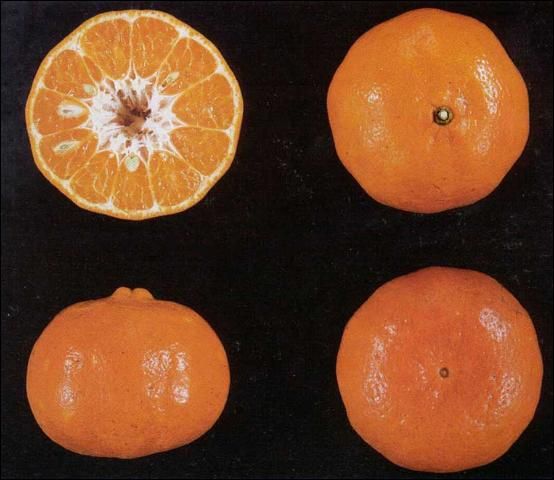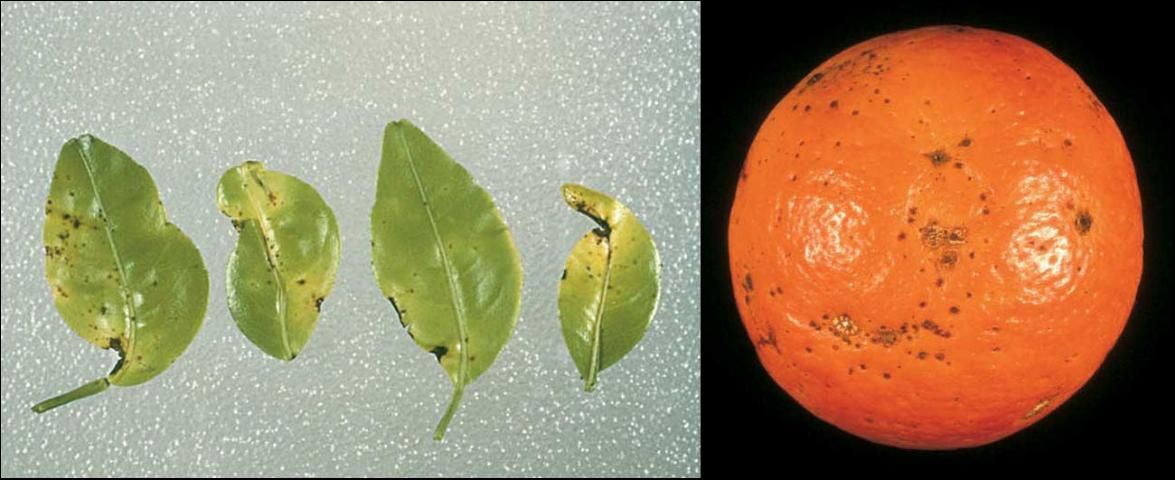Dancy (Figure 1) is one of the oldest tangerine varieties known in Florida. The variety originated in 1867 from a seed of Moragne tangerine in the grove of Colonel F. L. Dancy of Orange Mills. Dancy has been a very popular variety over the years but is no longer widely planted due to a number of production problems that will be discussed later. There are still a few groves of Dancy as well as numerous dooryard trees, but this variety has been replaced over the years by new tangerine hybrids such as Robinson, Sunburst, and Honey (Murcott).

Credit: UF/IFAS CREC
Fruit Characteristics
Fruit size of Dancy is quite variable, depending upon crop load on the tree. Average size is 2¼-2½ inches in diameter. The rind has deep reddish-orange color at maturity and is easily peeled due to the thin, leathery peel. These same characteristics make the fruit easy to damage at harvest, and the fruit are usually clipped so as to prevent peel tearing or plugging. There are always a few seeds in each fruit ranging from a low of around 6 to perhaps as many as 20.
The fruit shape is flattened and often somewhat pear-shaped due to the development of a neck at the stem end. The apex of the fruit is usually depressed. The fruit surface is smooth and glossy until almost over-mature when it may become bumpy. The fruit matures in the December-January time period.
This variety tends to be alternate bearing, producing large crops of small fruit one year, followed by small crops of large fruit the following year. Crop thinning by judicious pruning is advised in these situations.
Tree Characteristics
Dancy produces a rather large tree at maturity and tends to be vigorous with an upright growth habit. The tree is nearly thornless with thick foliage. The tree is usually productive but does have the aforementioned problem with alternate bearing. The tree is moderately cold hardy, but the thin-skinned fruit are not.
Both the tree and the fruit are susceptible to the Alternaria fungus disease (Figure 2) which can result in defoliation and crop loss unless carefully controlled.

Credit: UF/IFAS CREC
Dancy has been successfully produced on many rootstocks over the years and Cleopatra mandarin has been the most popular since it is a tangerine type and seems quite compatible with the Dancy.
Cultivation
This once-popular variety has been replaced by several newer tangerine types. Reasons for grower dissatisfaction are listed below for your consideration.
- Dancy is susceptible to Alternaria which will require sprays over and above those required for most other varieties. Each flush should be protected with fungicide to control the disease. Pruning produces additional flushes, making the disease more difficult to control. For more information on Alternaria, see Florida Citrus Production Guide: Alternaria Brown Spot.
- Alternate bearing is a problem with Dancy which affects fruit size and quality. Unfortunately, the best control for the problem is pruning in large crop years and this contributes to the Alternaria control problem.
- Dancy has a thin, delicate peel which necessitates careful handling. Clipping is recommended as the preferred method of fruit removal to avoid plugging.
More Information
Jackson, Larry K., and Frederick S. Davies. 1999. Citrus Growing in Florida, Fourth Edition. University Press of Florida. pp. 94-95.
Saunt, James. 2000. Citrus Varieties of the World. Sinclair International Limited, Norwich, England. p. 60.
Whiteside, J. O. 1986. "Alternaria-Recognition, Prevention and Control of Alternaria Brown Spot on Dancy Tangerines and Minneola Tangelos." Citrus Industry Magazine. 67:44-47,54.